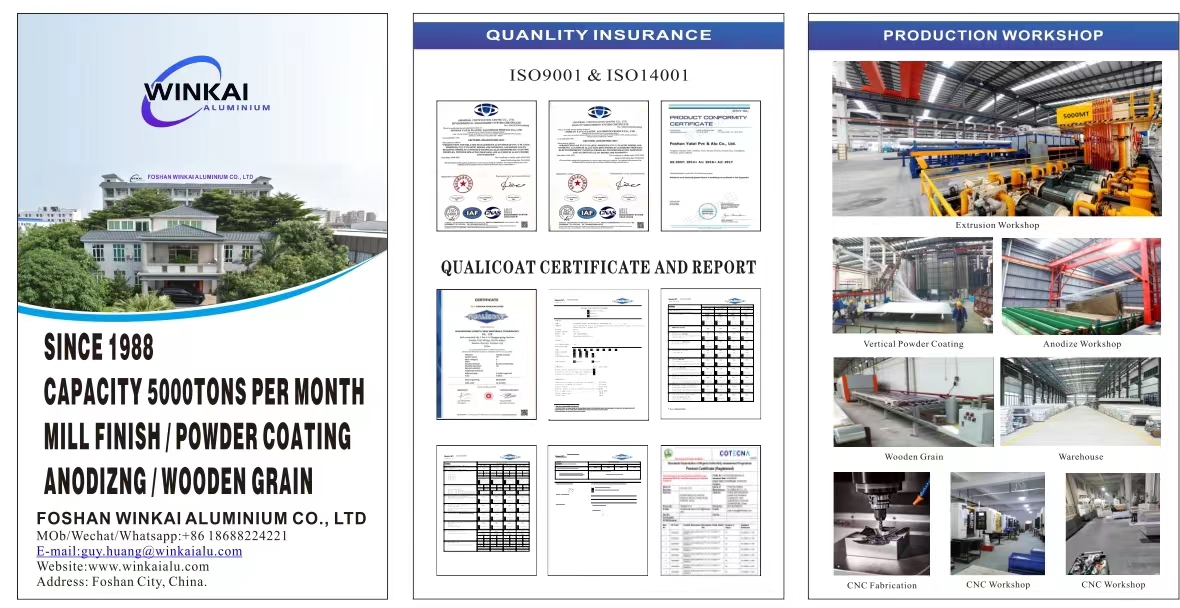Overview of Aluminum Profile Surface Technology
To overcome the shortcomings of surface properties of Aluminium Profile. Improving surface hardness and corrosion resistance, expanding application range, and extending service life are essential aspects of surface treatment technology in the use of aluminum alloys. The surface treatment of Aluminium Construction Profiles, including windows and doors have formed a powerful system with broad market, advance technology, complete equipment in China.
The production lines of aluminum anodized film, aluminum anodized electrophoretic coating composite film, and organic polymer spray film are three major technical systems, integrating world advanced technology. In recent years, industrial practice has shown that aluminum decorative parts and components for high-speed rail and automobiles, mechanical product components, and aluminum alloy casings for electronic products have been successfully protected with anodized films to improve their appearance decoration and extend their service life. Indicating that the Aluminum Extrusion Profile surface processing is aimed at addressing or improving the three major aspects of aluminum alloy's protection, decoration, and functionality. Anodizing and powder coating are the two most common effective protection methods.
Aluminum alloys can be divided into two categories: deformed aluminum alloys and cast aluminum alloys. Deformed aluminum alloys have a particularly large amount of usage and are widely used, especially for Aluminium Construction Profiles. Effective surface treatment is necessary, resulting in a huge production scale and volume of surface treatment for Aluminium Profile in construction. Therefore, people generally pay attention to the surface treatment of deformed aluminum alloys. Cast aluminum alloys are mainly used in non construction industrial fields, and most cast aluminum alloys may be used directly without surface treatment. However, in order to improve the surface hardness and wear resistance of Aluminum Extrusion Profile, anodizing treatment of cast aluminum alloys is an important and effective measure. In some special occasions, it is still an irreplaceable process choice, and there has been a significant trend of expansion in recent years. Anodizing used in construction focuses on long-distance appearance, uniformity, and long-term weather resistance.
Due to the easy manipulation of the thickness and dimensional accuracy of anodic oxide films, many structural surfaces of anodic oxide films can also absorb various lubricants, thereby reducing friction and wear. Therefore, hard anodizing Aluminum Extrusion Profile technology has been widely used in industrial fields such as aviation, aerospace, shipbuilding, automobiles, motorcycles, electronics, instrumentation,textile machinery, and household appliances. From the perspective of development trends, the structure of Aluminium Profile anodized films can absorb various functional property points, thus forming a very broad field of anodized functional films. Although there is no essential difference in the principle, equipment, process, and detection between hard anodizing and ordinary anodizing, there are still some differences in the specific process measures between them. The temperature of the water tank solution for hard anodizing is relatively low. Secondly, the applied current of hard anodizing is relatively high. Meanwhile, the concentration of hard anodized water tank solution is relatively low. Our factory provides good quality Industrial Aluminum Profile.





